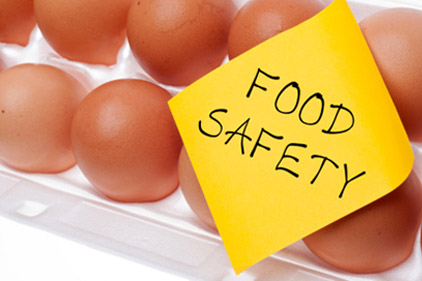FDA’s Food Safety Modernization Act (FSMA) may have been signed into law in 2011, but the effects of its implementation are still being felt by many manufacturers and suppliers in snack and baking—and for good reason.
“FSMA impacts all facets of how a company serves its customers and conducts its logistics management,” explains Bob Klimko, director of market development, ORBIS Corp., Oconomowoc, WI. “FSMA is in its fourth year now. Its original goal was to develop standards that food and beverage processors and suppliers can adhere to, so we can proactively prevent food contamination. It’s set guidelines for improvement, so the industry is no longer responding to outbreaks of foodborne illnesses after they have already occurred.”
Indeed, food-safety systems have been in place via third-party certifiers since long before 2011, but they’ve never been required industry-wide, agrees Michelle Cannon, senior food scientist, International Food Network LLC, Ithaca, NY. “Building these systems will require considerable time and money to ensure adequate compliance,” she says, “which may be burdensome to smaller manufacturing operations.”
Cost challenges
One way to keep costs down is on-the-job FSMA food-safety training programs for frontline workers, Cannon explains, so potential mistakes are caught before they become unmanageable. “Manufacturers should look to their frontline employees as the primary food-safety gatekeepers,” she says. “By empowering frontline workers with food-safety knowledge, they can proactively address food-safety concerns and prevent potential issues.”
And while many companies already teach employees a set of safety skills—those needed to perform the job—over a short period of time, this might not always be enough. It’s important, Cannon says, to supplement more practical efforts with long-term programs that teach the fundamentals of food safety and reiterate them as part of an ongoing education.
Another way for food manufacturers to keep costs down is to educate end consumers on which verifications are truly for food safety and which are indicators of food traits. “There are numerous third-party certifications that provide a range of guarantees, from food safety and quality to non-GMO or vegan,” explains Mike Orlando, food scientist and quality systems manager, International Food Network. “While these serve a purpose to their intended audiences, the general public needs to be aware of the distinctions between certifications that guarantee food safety and others that guarantee characteristics unrelated to food safety. In a marketplace where perception is reality, consumers can place unwarranted demands on food manufacturers to attain unnecessary third-party certifications that have nothing to do with safety.” And, of course, these certifications all cost money—and take time.
Contaminants of concern
Microbial counts add up, so an effective kill step is necessary for ready-to-eat (RTE) products. But preserving quality is paramount. Radio Frequency Co. Inc., Millis, MA, has developed pasteurization systems that operate at 40 megahertz, “optimizing depth of penetration and uniformity of heating, ensuring microbe kill, while avoiding quality issues from prolonged exposure to high temperatures,” explains Timothy Clark, president and CEO of the company. “Our systems range in capacity from 1,000 pounds per hour to 50,000 pounds per hour.”
These systems are designed for manufacturers that need to implement a “kill” step into processes that otherwise wouldn’t include one, to ensure that products are not contaminated with pathogens that might potentially make end users ill.
Keeping contaminants out of the logistics stream is also vital to a sound food-safety program. And as reusable pallets become more popular as part of sustainability initiatives, it’s critical that manufacturers understand their role in optimizing food safety. “Get cleanable pallets made of materials specific to the application process (i.e., FDA-approved),” advises Klimko. “Ensure they have no spaces for liquid collection, no hollow areas and no niches. They should be nonporous, so they don’t absorb moisture or odor.”
Indeed, Klimko says, today’s reusable pallets allow for high-temperature washing and custom color codes, and include materials that can work in various temperatures without absorbing environmental contaminants like odors, bacteria and pesticides. “Work with a partner who understands and leads in cleaning techniques,” he adds. “Understand the differences between microbiological cleaning or industrial sterilization and nonmicrobiological cleaning. Know enough to ask the right questions, and the right partner should lead you to the right solution.”
When it comes to specific contaminants, mold is still on manufacturers’ radars, especially manufacturers of moist cakes and other treats—particularly as better-for-you foods gain more traction. “As baked goods manufacturers try to adjust to evolving consumer requirements, such as low-sodium or gluten-free, an unintended consequence may be an increase in the level of unwanted microorganisms in their finished product, either by the inclusion of new and different ingredients or via newer processing techniques,” explains Matthew Hundt, global product manager, antimicrobials, DuPont Nutrition & Health, Wilmington, DE.
To counter this challenge, the company offers a comprehensive range of bio-based protective ingredients with an in-dough fermentate and a proprietary anti-mold product for the surface treatment of baked goods. “The use of these products can effectively control mold outgrowth with similar results as those seen with chemical preservatives in many applications,” says Hundt. In the end, he stresses, these products used together offer bakers an efficient means of reducing the rate of returns due to spoilage, add extra days of shelf life and give consumers long-lasting products with a natural label, clean flavor and appealing smell.
Future concerns
As the industry looks toward the future of food safety, consumer demands are shaping its outlook like never before.
One trend that might impact food safety is a shifting consumer preference toward exotic flavors, says Orlando. “Emerging pathogens inherent to imported foods that we haven’t typically consumed may pose threats to our established systems by overcoming the food-safety hurdles and causing human foodborne illnesses,” he warns. “Safety criteria as defined in the U.S. may not be identified or of concern in other countries where an ingredient is produced, as countries differ in their lists of required hazards of public health concern. This may have negative implications if a common system is not established in the long-term.”
Consumer preference is also bringing GMOs into the food-safety arena. “Consumers have become, with the help of numerous media outlets, very educated about what goes into processed foods and how they are manufactured,” Orlando says. So, for many consumers, a conversation about food safety now expands beyond pathogens.
Similarly, allergens are becoming top-of-mind among many shoppers, and their concerns are branching into the food-safety world. This issue is one that greatly affects bakers and snack producers. “Considering that three of the major eight declarable U.S. food allergens (milk, eggs and wheat) are commonly associated with snack and bakery foods, it’s not surprising that managing these ingredients, as well as effectively communicating allergen information, poses a challenge,” says Orlando. “These challenges are present through the supply chain, as ingredients and information (or lack thereof) flow from primary producers to finished product manufacturers. If there is ineffective communication between suppliers and manufacturers, crucial allergen information can be omitted from ingredient statements or allergen-labeling declarations.” And, he adds, as consumers continue to demand allergen-free offerings, manufacturers will have to pursue robust cleaning, sanitation and verification programs to prevent cross-contamination.
FDA recently inserted itself into this fight with its final rule on gluten-free food labeling, which dictates that food products bearing a gluten-free claim labeled on or after Aug. 5, 2014 must either be inherently gluten-free or below 20 ppm of gluten-containing grains. This rule applies to all FDA-regulated packaged foods.
“While gluten-free certifications have been offered by third-party organizations, they were only voluntary,” says Orlando. “Now, with this final rule, gluten-free labeling falls under the purview of the FDA and carries with it mandatory validation and verification requirements—all of which have associated costs.” And the true test of acceptance comes with shopper acceptance of these economic realities.




